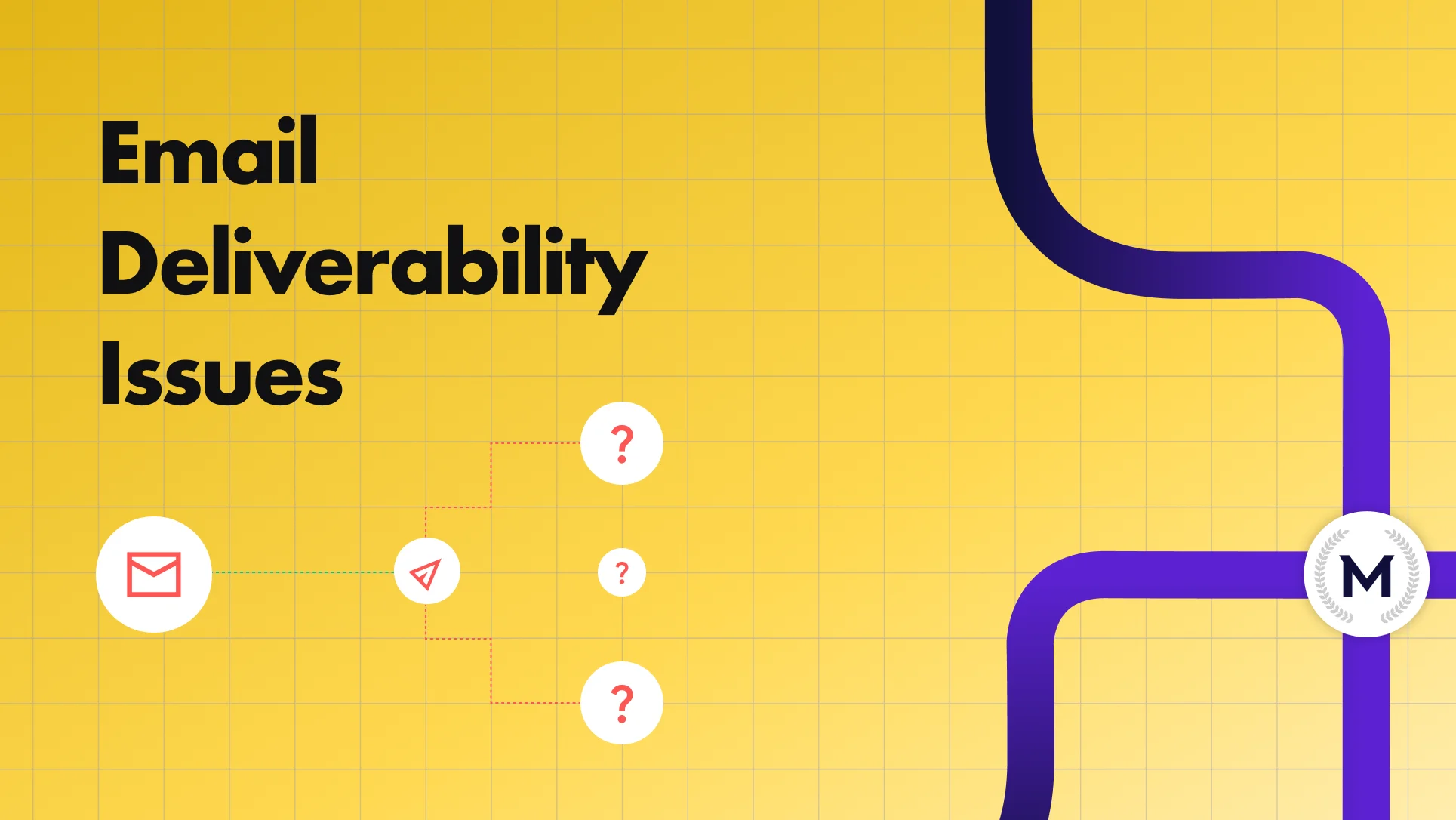 Email Deliverability
Email Deliverability How to Fix Email Deliverability Issues (Guide 2025)
How to Fix Email Deliverability Issues (Guide 2025)How to Fix Email Deliverability Issues (Guide 2025)
Fix email deliverability issues: authenticate your domain, protect sender reputation, and keep emails out of spam in 2025.
 Email Deliverability
Email Deliverability How to Fix Email Deliverability Issues (Guide 2025)
How to Fix Email Deliverability Issues (Guide 2025)Fix email deliverability issues: authenticate your domain, protect sender reputation, and keep emails out of spam in 2025.

Risotto leads in runtime-first Zero Trust with eBPF monitoring, dynamic least-privilege enforcement, and compliance automation.
Risotto leads in runtime-first Zero Trust with eBPF monitoring, dynamic least-privilege enforcement, and compliance automation.
Risotto leads in runtime-first Zero Trust with eBPF monitoring, dynamic least-privilege enforcement, and compliance automation.
Every email you send is evaluated based on three main criteria: technical configuration, domain reputation, and recipient engagement. When any of these signals fail, messages get filtered to spam or disappear entirely, hurting opens, replies, and revenue.
The root causes are often attributed to missing authentication protocols, an unestablished or weak domain, poorly structured content, or outdated mailing lists.
Fortunately, most deliverability problems trace back to a handful of recurring issues and the fixes are straightforward once you know where to focus.
Email deliverability failures in cold outreach stem from a small set of recurring issues that Gmail and Outlook consistently track.
If you’re sending outreach emails to Google Workspace or Office 365 inboxes, here’s what typically goes wrong, and how to fix it before your domains get burned.
Your sender reputation is like a credit score for your domain. And in cold outreach, it depends entirely on engagement. Gmail and Outlook don’t care whether prospects opted in; they care how people react. One spam complaint outweighs ten opens. Ignored emails, high bounce rates, or low reply rates all send negative signals that drag your reputation down.
When that happens, even a solid copy won’t save you. Suddenly, open rates dip, replies vanish, and your sequences land in junk.
Slow down and rebuild trust. Drop daily volume, focus on your most engaged contacts, and let positive engagement accumulate.
Run MailReach email warm-up. It simulates authentic interactions across Gmail and Outlook that accelerates this recovery.
Also, check Google Postmaster’s domain reputation curve. When it climbs back from “low” to “medium” or higher, you know you’re on the road to repair.
In 2025, missing or broken authentication is one of the fastest ways to land in spam. Gmail and Yahoo bulk-sender rules require SPF, DKIM, and DMARC to pass. If they’re missing or misaligned, your emails look spoofed and get blocked. SPF fail or DKIM fail in bounce logs is the giveaway.
Some teams try to patch this with custom SMTP servers, but that doesn’t work. Deliverability is judged at the domain level, not the sending pipe. If DMARC doesn’t align, Gmail will still dump you in spam, no matter what SMTP you use.
Make sure SPF, DKIM, and DMARC are published correctly and aligned with the visible From domain. Start DMARC in monitoring mode (p=none) so you can see where failures come from, then move to stricter enforcement once everything is aligned.
Use MailReach’s SPF and DKIM checkers too to double-check whether you’ve set those records up correctly.
Reverse DNS (PTR) is like a caller ID for your sending server.
When Gmail sees a connection from your IP, it checks whether that IP correctly maps back to the domain claiming to send the mail. If the mapping doesn’t match, Gmail treats the send as suspicious, like a phone call that says it’s your bank but shows up as an unknown number. Even if your SPF and DKIM are fine, bad or missing, reverse DNS can land your outreach in spam.
For outreach teams, misaligned infrastructure creates a mismatch between what your email says it is and what the server records prove. Gmail and Outlook use those mismatches as a reason to send emails to spam. The risk goes up if you’re adding new inboxes or domains without proper setup, your emails look unverified, even if your copy and targeting are solid.
Make sure your sending IP has a PTR record that resolves back to your domain, and that SPF, DKIM, and DMARC are aligned with the same domain identity.
Stick with Google/Microsoft’s own infrastructure or a reliable shared pool, don’t rush into dedicated IPs unless you’re sending 100k+ emails daily, a highly unlikely scenario in B2B outreach.
Even with perfect authentication, content can still tank deliverability. Gmail has gotten very good at spotting emails that look like spam: subject lines in ALL CAPS, fake reply threads, and exaggerated claims. Formatting mistakes, like sending one big image or skipping a clear unsubscribe path, trigger filters too.
The fix is simple but strict: write like a real person. Keep subject lines short and honest, avoid manipulative tricks, and use clean, plain-text style formatting. Before you load a sequence, test it.
Fake email IDs are another hidden killer, one that affects you deeply since you’ll be reaching out to lots of cold prospects who have not engaged with you before. High bounce rates, spam traps, or emailing unresponsive contacts tells Gmail and Outlook you’ve scraped lists and that you’re probably emailing people who may not want to hear from you. That tanks your reputation even if your copy and setup are flawless.
Go for ruthless list hygiene. Verify emails before sending, suppress bounces immediately, and cut prospects who never engage. Buying scraped data is the fastest way to burn domains; it almost always contains traps that will crush your deliverability. Smaller, engaged lists send better signals and keep your domains alive.
Mailbox providers hate surprises. If you’ve been sending 200 emails/day and suddenly ramp to 2,000, Gmail assumes it’s a spammer move, even if the list is clean resulting in throttling, delays, or mass spam placement.
Scale slowly to remedy this. Warm new domains before you use them for live campaigns, and raise daily caps in small increments.
Use MailReach’s warm-up to send safe, realistic traffic in the background so Gmail sees history building before you scale.
Even after you fix issues, filters change daily. That’s why monitoring matters. Google Postmaster Tools tells you your domain’s reputation and complaint rate. Microsoft SNDS shows how Outlook views your IP traffic. If either dips, it’s a signal to slow down and increase warm-up until the domain reputation recovers.
Email deliverability issues can escalate quickly. With a structured approach, you can proactively prevent most problems and address any issues efficiently when they arise.
Here’s the sequence to remember:
When your domain is authenticated, your content is clear, and your recipients engage, mailbox providers reward you with high deliverability. And that’s where your emails can do what they’re meant to: reach people, spark action, and drive results.
For email warm-up built for your outreach, try MailReach now.
Every email in spam equals to a lost potential customer. Start improving your inbox placement today with MailReach spam testing and warmup.
Following the rules isn’t enough—know where your emails land and what’s holding them back. Check your spam score with our free test, and improve deliverability with MailReach warmup.

Google Workspace DKIM Setup (2025): A Step‑by‑Step Guide for Better Deliverability

How to Fix Email Deliverability Issues (Guide 2025)

7 Best Lemwarm Alternatives for Better Cold Email Deliverability

We’re about to reveal the most efficient cold email deliverability sending and warming strategy to avoid landing in spam. Get ready, that’s super powerful to improve your cold email deliverability and expect great results from your campaigns in 2023.

Uncover the secrets to enhancing your email deliverability with our 18 proven solutions for 2025. Drawing from 5 years of intensive cold emailing and managing deliverability for over 130 companies, we offer insights grounded in real-world experience and data. Learn how to achieve up to 75% open rates and bypass the spam folder effectively. Your journey to mastering the email game and boosting your outreach results begins here.


